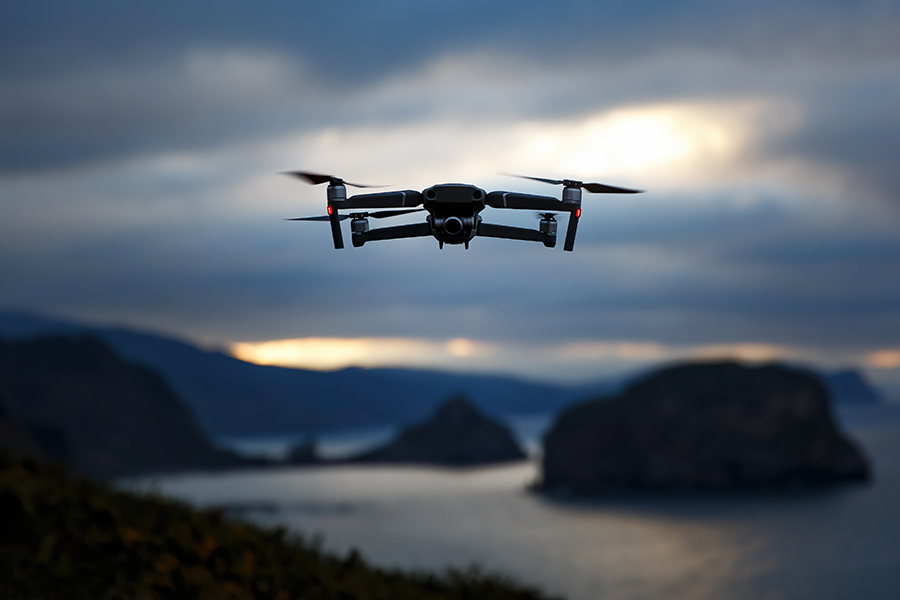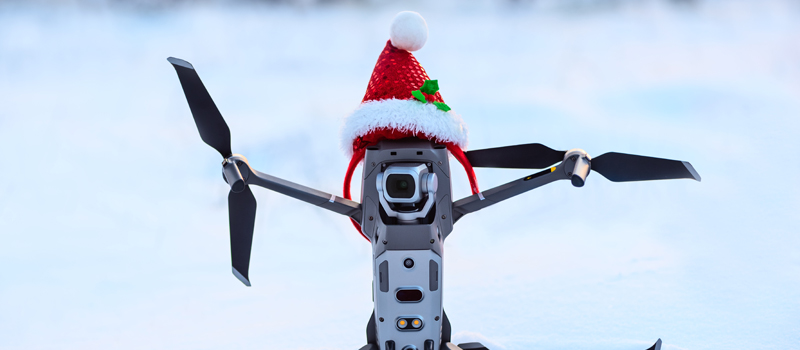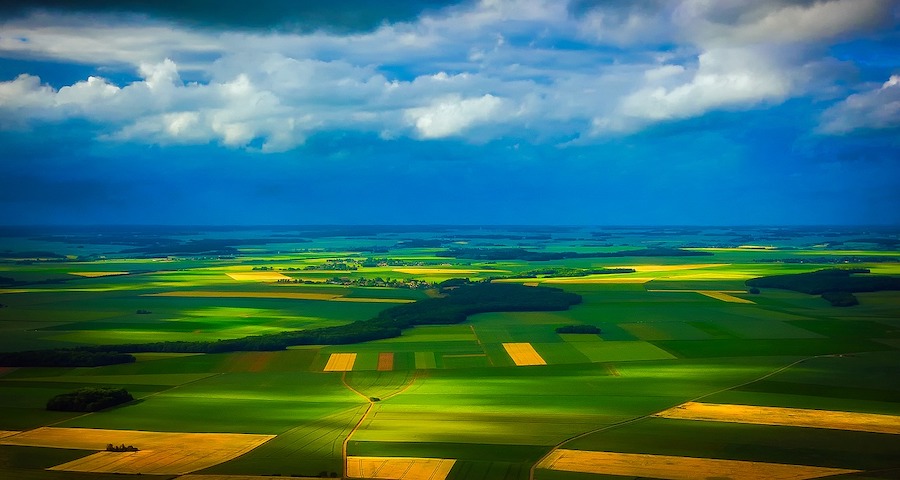-
Buying drones for night photography – what to consider
- Sensor size
- Shutter speed
- ISO range
- Aperture
- Color profiles
- ADS-B
-
Top 5 Best Drones for Night Photography
- 1. DJI Mavic 3 Classic
- 2. Autel Evo Lite+
- 3. DJI Mini 3 Pro
- 4. DJI Air 2S
- 5. Autel Evo Nano Plus
-
Rules and Other Tips for Flying Drones at Night
- What are the rules for flying drones at night?
- A note on sub-250-gram drones
- Other tips on night operations
-
Final thoughts
We have all seen those lists of the best camera drones available today but now, we are focusing on a sub-set of those drones for a very specific use case – night drone photography.
What should you look for in a camera drone if you like taking pictures at night or in low light? Aside from camera specs, are there safety measures or legal restrictions that you need to consider?
Buying drones for night photography – what to consider
The vast selection of drones nowadays can be overwhelming, especially if you’re looking for a drone just for that one specific application. In the case of night photography, you will naturally want to focus on the camera specs. However, there are also certain safety and quality-of-life features that will make the experience of taking pictures at night with your drone better.
Sensor size
The image sensor or camera sensor is part of the camera that collects light information. Bigger is usually better when it comes to sensor size, especially if you plan on taking photos or videos in low-light conditions. Larger image sensors also translate to a wider dynamic range and higher resolution, allowing for more vibrant photographs whether at night or day.
All things held equal; a larger image sensor is better. For camera drones, the current standard is to have a 1-inch sensor.
Shutter speed
A camera’s shutter speed is a measure of the length of time that the camera shutter is open. The proper shutter speed during night photography depends largely on whether you are shooting fast-moving subjects. It is a good idea to start at any value between 1/125 to 1/200 seconds in low light conditions. However, ISO and Aperture settings also play a role in capturing good shots at night.
ISO range
The ISO of a camera pertains to the sensitivity of the image sensor to light. A wider ISO range makes for a more versatile camera, particularly in low-light conditions. An ISO setting of 1600 or 3200 is typically good enough for photos of cityscapes at night. Cranking up the ISO to 6400 might be good for scenarios where there are not many light sources, but it does tend to produce images with lots of noise.
Again, ISO settings have to be considered in the context of both shutter speed and aperture.
Aperture
The aperture is the size of the opening of the diaphragm of the lens when it takes an image. A larger aperture allows the lens to capture more light, generally creating better night photographs.
Not many drones come with an adjustable aperture, mostly because aperture control is less important when taking photos of subjects that are very far away. Still, having an adjustable aperture and depth of field in a camera drone is a premium feature worth looking for.
Color profiles
Color profiles are just different ways that a camera processes the light that it receives and turns it into colors in images and videos. Many camera drones offer a selection of different color profiles, each of which may highlight certain aspects of any image such as contrast or shadows. The selection of the best color profile is typically a matter of personal preference, but having more choices is a good luxury when you’re shooting in challenging conditions.
ADS-B
“Sense and avoid” guidelines are harder to comply with at night because of the lack of visual cues. Even obstacle avoidance sensors may not be very reliable as most of these rely on vision-based sensors.
It’s not much, but it would help to fly a drone that has an ADS-B receiver. This is just so you can be aware of the presence of any nearby manned aircraft that is actively transmitting ADS-B signals. This is not a foolproof safety measure but can help nonetheless.
Some camera drones are better equipped than others for night photography, but any high-quality camera drone from a reliable brand should give you more than enough of the necessary tools. As in most cases, your skills as a photographer and drone pilot are more important than the hardware.
Top 5 Best Drones for Night Photography
1. DJI Mavic 3 Classic
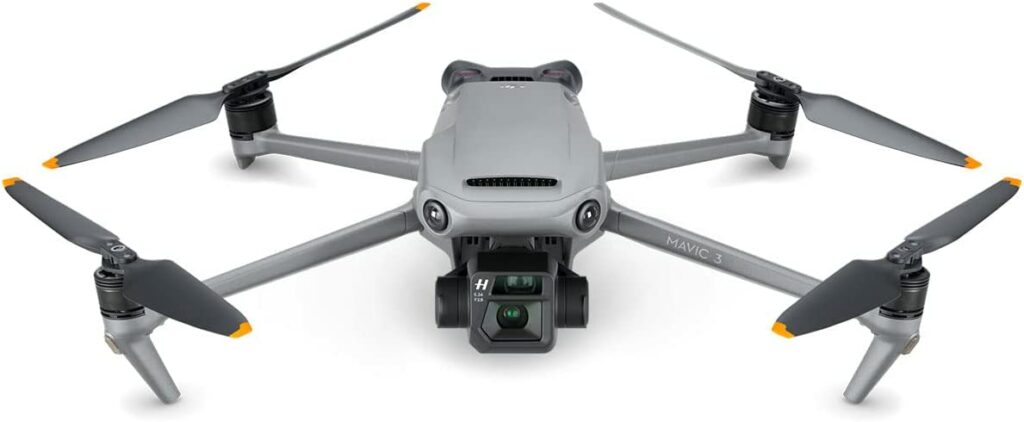
| Specifications | |
| Sensor size | 4/3” CMOS |
| Image resolution | 20MP |
| Video resolution | 5.1K @ 50 fps, 4K @ 120 fps |
| Lens aperture | f/2.8 to f/11 |
| ISO range | 100 to 6400 (Photo and Video) |
| Shutter speed | 8 to 1/8000 s |
| Color profiles | Normal, 10-bit D-Log |
| File formats | Photo: JPEG/DNG Video: MP4/MOV |
| ADS-B? | Yes |
At the top spot is the DJI Mavic 3 Classic, a fairly new model from DJI and the most affordable member of the premium Mavic 3 lineup. The Mavic 3 Classic retains the usual ultra-portable design of the Mavic line but comes loaded with some of the more premium hardware that DJI has offered for their prosumer products.
The centerpiece of the Mavic 3 Classic is the impressive Hasselblad camera with a 4/3” image sensor. Aside from being an excellent all-around sensor, the camera of the Mavic 3 Classic also offers stellar control for night photography with its adjustable aperture and wide ISO range. The large image sensor also helps in taking more detailed images, even in low light.
As with the premium camera drones of DJI, the Mavic 3 Classic offers both the Normal color profile and the 10-bit D-Log color profile. The D-Log color profile is also a great tool for making images vibrant and improving contrast, even in low light.
If you need more post-processing options, then you can choose to shoot in RAW mode or use the AEB function. For quick shots, the Mavic 3 Classic still works well in full auto and also has an HDR mode for auto-balancing exposure.
The Mavic 3 Classic has an excellent obstacle avoidance system but this is not something you will want to rely on when flying at night. However, the AirSense system that receives ADS-B signals can be a huge help in maintaining situational awareness.
The Mavic 3 Classic is an overall excellent camera drone whether you’re taking photos and videos at night or day. The steep price tag can be off-putting, particularly for those who are just after a casual night photography experience.
2. Autel Evo Lite+
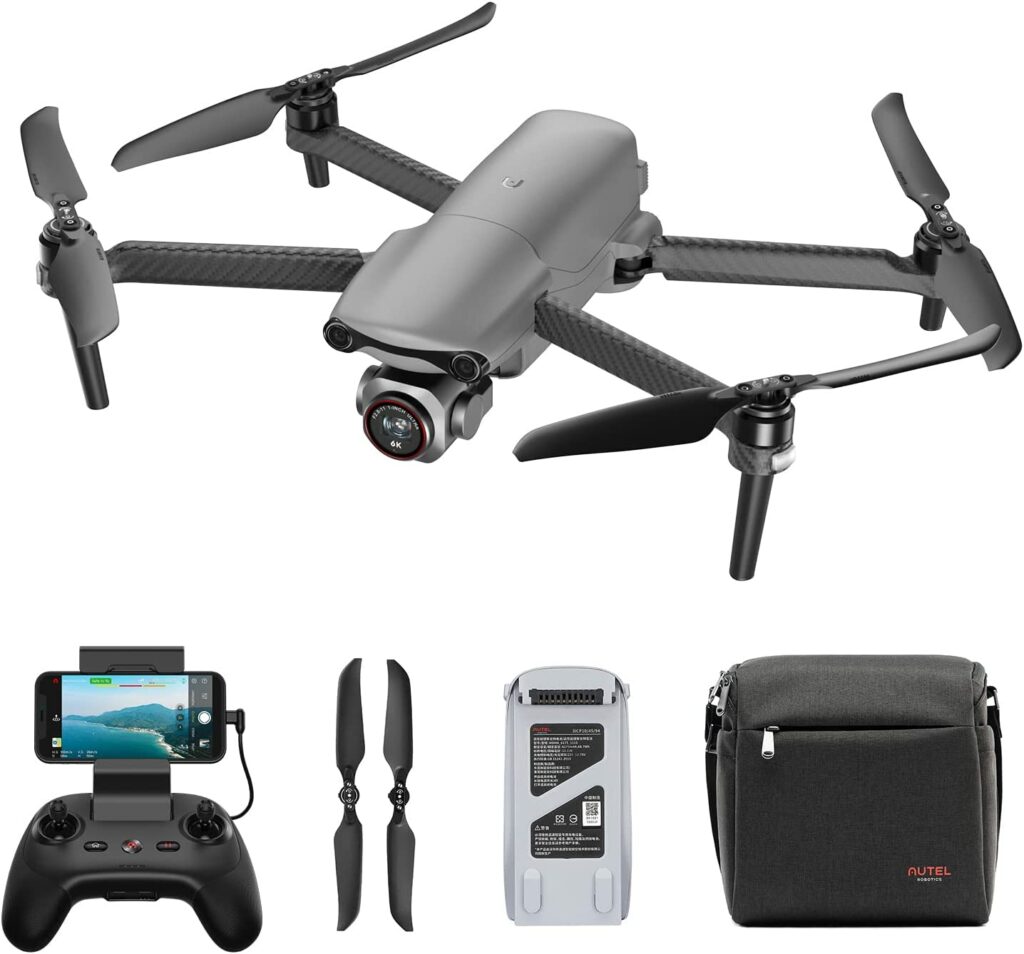
| Specifications | |
| Sensor size | 1” CMOS |
| Image resolution | Up to 50MP |
| Video resolution | 5.1K @ 60 fps, 1080p @ 120 fps |
| Lens aperture | f/2.8 – f/11 |
| ISO range | 100 to 6400 (Photo and Video), Up to 48000 (Night Mode) |
| Shutter speed | 8 to 1/8000 s |
| Color profiles | Normal, Log |
| File formats | Photo: JPEG/DNG Video: MP4/MOV |
| ADS-B? | No |
The Autel Evo Lite Plus is another excellent option for drone photography in low light or at night. Its hardware is a little less premium than that of the Mavic 3 Classic, but it is also significantly less expensive.
The Evo Lite Plus has an impressive 1-inch image sensor, a wide ISO range, and an adjustable aperture. The feature that sets the Autel Evo Lite Plus apart is a dedicated Night Mode with a wider ISO range. Resolution under Night Mode is limited to 4K, but it works exceptionally well for photos and videos.
Despite the high ISO values, shots taken in Night Mode look clean and crisp likely with some post-processing and noise reduction. Urban landscapes will turn out excellent, and even rural scenery can look a bit clearer and have more details in Night Mode.
The Evo Lite Plus also offers a Log color profile that creates more vibrant photos with better contrast. It performs just about as well as the similar color profile of the Air 2S.
All in all, the Autel Evo Lite Plus is most comparable to the DJI Mavic 3 line but at a much lower price tag. It does not have an ADS-B feature, however, similar to many other Autel drones.
3. DJI Mini 3 Pro
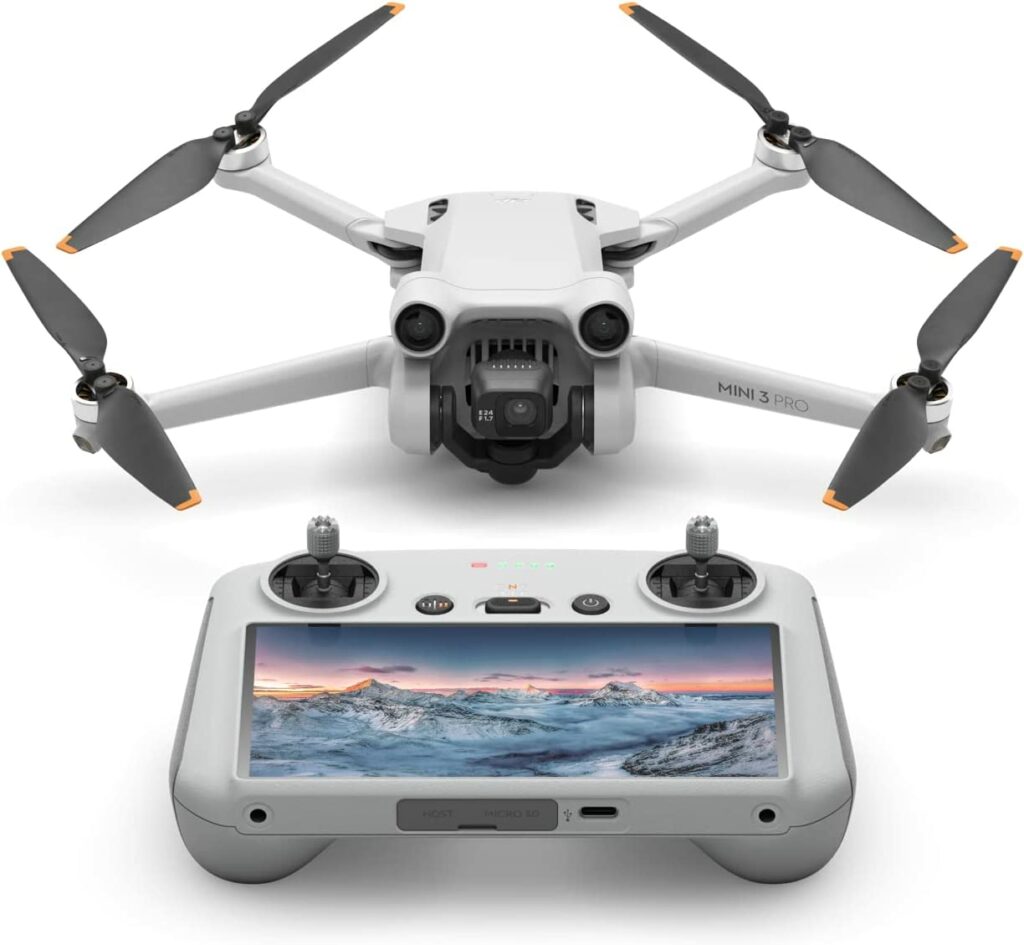
| Specifications | |
| Sensor size | 1/1.3” CMOS |
| Image resolution | 48MP |
| Video resolution | 4K @ 30 fps, 2.7K @ 60 fps, 1080p @ 120 fps |
| Lens aperture | f/1.7 |
| ISO range | 100 to 6400 (Photo and Video) |
| Shutter speed | 2 to 1/8000 s |
| Color profiles | Normal, D-Cinemalike |
| File formats | Photo: JPEG/DNG Video: MP4/MOV |
| ADS-B? | Yes |
The DJI Mini 3 Pro, as the name implies, is the premium version of the DJI Mini lineup. It is about the same price as the Air 2S and gives up some premium hardware features for the sake of portability. If you’re the type who wants to bring your drone everywhere, then this would be a drone worth considering.
The Mini 3 Pro only has a 1/1.3” CMOS image sensor. This may seem underwhelming, but what sets the Mini 3 Pro apart is the f/1.7 fixed aperture. With the large aperture, you can take amazing night shots even at low ISO values at a low shutter speed. The D-Cinemalike color profile also helps for shots in low light, although it may still be a matter of personal preference.
Aside from the stellar night performance, the best reason to get a Mini 3 Pro would be its convenient portability because of its size and weight. Without accessories, the drone weighs less than 250 grams which means that it does not need to be registered for recreational use.
4. DJI Air 2S
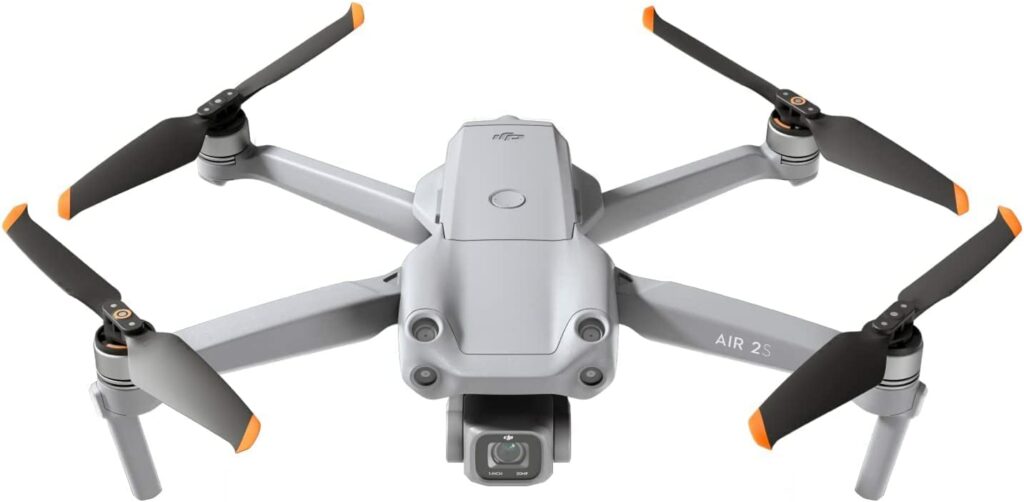
| Specifications | |
| Sensor size | 1” CMOS |
| Image resolution | 20MP |
| Video resolution | 5.4K @ 30 fps, 4K @ 60 fps, 1080p @ 120 fps |
| Lens aperture | f/2.8 |
| ISO range | 100 to 12800 (Photo), 100 to 6400 (Video), 100 to 1600 (10-bit D-Log) |
| Shutter speed | 8 to 1/8000 s |
| Color profiles | Normal, 10-bit D-Log |
| File formats | Photo: JPEG/DNG Video: MP4/MOV |
| ADS-B? | Yes |
The DJI Air 2S is easily one of the most popular drones that DJI has released in recent years. It hits just the perfect balance of price, hardware, and ease of use.
The Air 2S has a 1-inch image sensor and the ability to capture videos in 5.4K resolution, despite being a fairly inexpensive drone. It comes with a fixed aperture, which diminishes the flexibility of how you can set up night shots. However, an expanded ISO range in manual photo mode somewhat makes up for this.
The Air 2S also comes with the standard 10-bit D-Log color profile just like other DJI drones. This color profile is also a good option for increasing the contrast of night photos, although there is a penalty when it comes to the maximum ISO value. Night photos with the Air 2S look nice but are not as detailed as those you would get with the DJI Mavic 3 Classic or the Autel Evo Lite Plus.
If you’re looking for a fairly affordable and all-around excellent drone, then the Air 2S is a very good and safe option.
5. Autel Evo Nano Plus
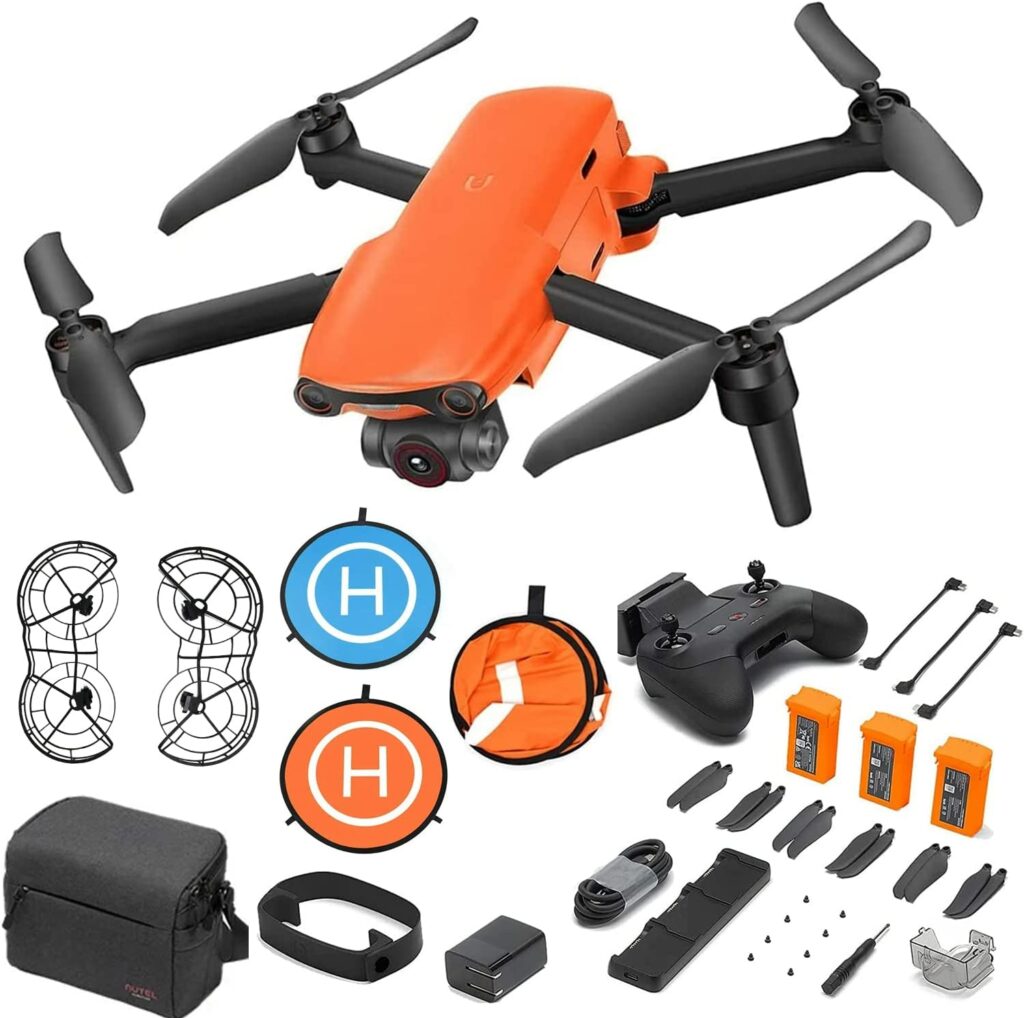
| Specifications | |
| Sensor size | 1/1.28” CMOS |
| Image resolution | 50MP |
| Video resolution | 4K @ 30 fps, 1080p @ 60 fps |
| Lens aperture | f/1.9 |
| ISO range | 100 to 6400 (Photo and Video) |
| Shutter speed | 8 to 1/8000 s |
| Color profiles | Normal, LOG |
| File formats | Photo: JPEG/DNG Video: MP4/MOV |
| ADS-B? | No |
The Evo Nano Plus is one of Autel’s entries into the sub-250 market, making it a close competitor of the DJI Mini 3 Pro. Again, the portability of the Evo Nano Plus is one of its biggest advantages. It is also a fairly reliable camera drone, even for night photography.
The Evo Nano plus has a fairly standard ISO range and a fixed aperture. However, it has a pretty large aperture opening compared to many other camera drones. This makes the Evo Nano Plus quite handy for photography at night or in low-light conditions.
Perhaps a major drawback of the Evo Nano Plus is its undersized 1/1.28” image sensor. Although you can still take 4K videos at a low framerate, you will likely not have as much detail in your photos and videos compared to drones with larger image sensors.
The Evo Nano Plus is within the same price range as the DJI Mini 3 Pro and the DJI Air 2S. It is an option worth considering if you’re the type who does not want to bother with the DJI GeoFencing system. The Evo Nano Plus is a conveniently portable drone that does not disappoint when it comes to night photography.
Rules and Other Tips for Flying Drones at Night
Poor visibility and situational awareness are the major dangers and challenges of flying drones at night. With these in mind, there are certain rules in place to avoid drone-related accidents when flying in low light. Here are the most important ones:
What are the rules for flying drones at night?
Both Part 107 and recreational drone pilots are allowed to fly drones at night but are subject to a few restrictions.
Newly licensed Part 107 pilots should already have taken the version of the knowledge test that covers topics related to night operations. Those who got their licenses before the revamp of the knowledge test (in early 2022) must complete an online recurrent training course.
To fly drones at night, Part 107 pilots need to equip their drones with anti-collision lighting that is visible for at least 3 statute miles. It also must have a “flash rate sufficient to avoid a collision.”
For recreational drone pilots, the rules on night operations are less rigid. There actually is no rule under Section 44809 that mentions night operations. However, recreational drone pilots are required to fly under the safety guidelines of an FAA-recognized Community-Based Organization (CBO).
The FAA currently lists four CBOs on its official website. If you’re a recreational drone pilot flying at night, you must fly under the safety guidelines of any one of these recognized CBOs. The rules are quite similar and you will very likely still need to use anti-collision lighting.
A note on sub-250-gram drones
The rules on the use of anti-collision lighting if you are using a drone that weighs 250 grams and has not been registered with the FAA. The 250-gram threshold applies to the takeoff weight of the drone. In many cases, putting any accessory on a sub-250-gram drone takes it over the weight limit.
If you’re planning to fly at night with your ultraportable drone, it may be worth the time and effort to have it registered. Registration is easy and inexpensive.
Other tips on night operations
Perhaps the most important step you can do to prepare for night operations is to survey the flight area during the daytime. At night, obstructions like power lines and tree branches may not seem visible. Planning your operations during the day allows you to take note of these obstructions.
Is there an altitude that will allow you clear any potential obstacle in your surroundings? Then take note of this altitude and try to stay above it when flying at night.
It is also always a good idea to have spare anti-collision lights with you, in case the ones you are using get damaged or burn out.
Final thoughts
Drone photography is always fun, but even more so when done at night. There is a different dimension to the challenge of balancing scant light sources and the extreme contrast when doing night photography. It is also an amazing way to look at cities and even rural landscapes at night.
Having the right drone for night photography is one thing, but it is even more important to follow the rules and safety guidelines for night operations. Although the lack of visibility makes night operations a little riskier, there are lots of ways to fly drones at night at a reasonable level of safety.
